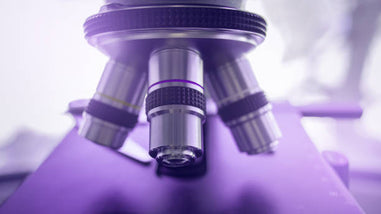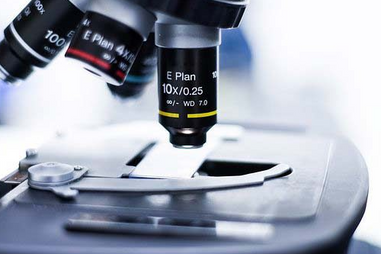- No products in the cart.
Microscopes are essential pieces of science lab supplies that help make important discoveries for science every day. Microscopes are instruments that help enlarge very small structures, and they are one of the most important inventions in scientific history. There are five main types of microscopes still in use today, and they all have their own unique qualities

- Simple microscopes: In a simple microscope, convex lenses of short focal length are used to see the magnified image of a small object. The magnifying power of a simple microscope is the ratio of the angle subtended by the image at the eye to the angle subtended by the object seen directly when both lie at the least distance of distinct vision or the near point.
-
Compound microscopes: Compound microscopes consist of two convex lenses. A lens of short aperture and short focal length facing the object is called objective. Another set of lenses of relatively moderate focal length and large aperture facing the eye is called the eyepiece. The object is placed between the center of curvature and focus of the objective. The image acts as an object for the eyepiece, which then acts like a simple microscope to produce the magnified image.
-
Electron microscopes: Electronic microscope are a bit different than the other types of microscope supplies. These complex instruments contain a source supplying a beam of electrons of uniform velocity, a condenser lens for concentrating the electron on the specimen, an objective lens, a projector lens, and a fluorescent screen. That screen is placed on a photographic film for a permanent record of the magnified image. Electron microscopes have much, much greater ranges of magnification capabilities compared to other types.
-
Phase-Contrast microscopes: These types of microscope supplies are used to study the behavior of living cells. It is a contrast-enhancing optical technique that can be used to produce high-contrast images of transparent specimens. Living cells can be examined in their natural state without being killed, fixed, or stained with the use of phase-contrast microscopes.
- Interference microscopes: Interference microscopes are used for quantitative studies of macromolecules of the cell's components. A pattern of bright and dark lines result from an optical path difference between a reference and a sample beam. The incoming light is split inside an interferometer, after reflection, the beams recombine, undergoing constructive and destructive interference and producing the light and dark fringe pattern.
Microscopes are essential for modern science, and your lab certainly needs the best ones. If you're looking for microscopes, microscope supplies, and more, let the experts at Lab Pro Inc. help you find the one that’s right for your needs.












































